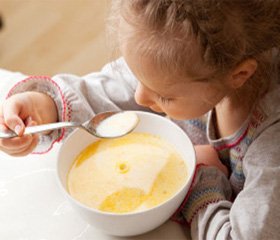Журнал «Здоровье ребенка» 1 (52) 2014
Вернуться к номеру
Posteradication period of helicobacter-associated peptic ulcer in children
Авторы: Sokolnyk S.V., Sorokman S.V., Sokolnyk S.O., Zymagorova N.O. – Bukovinian State Medical University (Chernivtsi)
Рубрики: Педиатрия/Неонатология
Разделы: Клинические исследования
Версия для печати
Introduction. One of the important issues arising after treatment of peptic ulcer and eradication of the pathogen, it is possible regression of changes that occur in the lining of the stomach and duodenum in response to infection with Helicobacter pylori (H.pylori).
Aim of the study. Rate dynamics of clinical and morpho-functional parameters in children with H.pylori-associated peptic ulcer within one year after eradication therapy.
Material and methods. Careful clinical-paraclinical examinations performed in 50 children with H.pylori-associated peptic ulcer disease aged 12–18 years (before antihelicobacter treatment, after 4 weeks after eradication therapy to confirm the elimination of the pathogen, after 6 months (assessment of early signs post eradication syndrome) and one year after treatment (score late manifestations post eradication syndrome). Verification of clinical diagnosis was carried out in accordance to the treatment of children in «Children's Gastroenterology» (Ministry of Health of Ukraine № 59 of 01.29.2013). Diagnostic of H.pylori was carried cytoscopy, ELISA and molecular-genetic research methods. Survey results statistically processed using the software package «STATISTISA V.6.0» using statistical modules «Fundamentals of Statistics», «Correlation analysis», «Factor analysis» and methods of Biostatistics and Clinical Epidemiology.
Results. The average duration of disease was 2,4 ± 1,2 years. After a first-line treatment in 38 (76,0 %) patients achieved eradication in 12 (24,0 %) children complete elimination of H. pylori could not be reached. After 4 weeks after treatment in a single child showed no clinical signs of disease, in half a year - symptoms found in 5 (13,2 %) patients, of which 3 (7,9 % ) children with positive eradication complained about the presence of pain in pyloroduodenal area and 2 (5,3 %) patients – a periodic heartburn; whereas in children have not achieved the elimination of the pathogen, often recorded abdominal pain and dyspepsia symptoms (33,3 % of patients). A year clinical signs of ulcers detected in 31.6 % of patients achieved eradication and 58.3 % of children with the presence of H. pylori after treatment.
Only 43 (86,0 %) patients with peptic ulcer disease at the end of 4 weeks of ulcers healed completely, of which 36 (83,7 %) – children, which was achieved by elimination of the pathogen, the rest – noted signs of duodenitis on the background of reducing the severity peryulcerosis edema and depth «inflammatory shaft». After half a year in any child with successful eradication of H.pylori have been identified recurrent ulcers and erosion and deterioration of endoscopic data, a third child was marked improvement endoscopic picture (decreased edema and congestion of the mucous membrane), the rest – still remained pronounced signs of gastritis and / or duodenitis. In children, the absence of complete elimination of the pathogen in half a year marked positive dynamic changes we have not identified.
A year later, patients achieving eradication of H. pylori, complete normalization of endoscopic pattern achieved only in 5 (13,2 %) children, 2 (5,3 %) patients diagnosed again ulcerous defect in the mucosa. In 4 (33,3 %) patients with the presence of H. pylori detected ulcer duodenal bulb and only 25,0 % of patients, a gradual regression of endoscopic signs.
After half a year in children with complete elimination of H.pylori often recorded saved function of acid production of the stomach than in patients with the presence of H.pylori (36,8 % and 16,7 %, rφ < 0,05). However, a year later there was no significant difference (rφ> 0,05) in both subgroups of children diagnosed mainly hyperacidity.
Conclusion. The study posteradycation period showed that successful eradication of H.pylori leads to an eventual reduction of clinical signs of disease, reduction of inflammatory activity and in most cases – to the normalization of endoscopic and morphological picture of peptic ulcer. However, the results also revealed the possibility of reverse dysregeneration violations even in the complete elimination H.pylori. This allows you to note the fact that the standard treatment of H.pylori-associated peptic ulcer disease in children, even in achieving eradication of the pathogen does not always lead to the stability of remission in need of finding possible factors that affect the nature of the posteradycation period and determine the effectiveness of the treatment.
1. Livzan M.A. Posteradikatsionnyy period khronicheskogo gastrita, assotsiirovannogo s Helicobacter pylori / M.A. Livzan, A.V. Kononov, S.I. Mozgovoy // Consilium medicum. – 2010. – T. 4, № 3. – S. 36-40.
2. Potrokhova Ye.A. Varianty techeniya N. pylori-assotsiirovannogo gastrita u podrostkov posle eradikatsii vozbuditelya / Ye.A Potrokhova, Ye.G. Pomorgaylo, A.V. Kononov // Rossiyskiy vestnik perinatologii i pediatrii. – 2012. – № 2. – S. 46-51.
3. Sistema prognozirovaniya razvitiya yazvennoy bolezni dvenadtsatiperstnoy kishki u detey s ispolzovaniyem matematicheskogo analiza vliyaniya geneticheskikh faktorov / T.V. Sorokman, S.V. Sokolnik, D.R. Andrіychuk, L.Yu. Khlunovska // Molekulyarnyye osnovy klinicheskoy meditsiny – vozmozhnoye i realnoye: Ros. kongress s mezhdunar. uch. 18-20 iyunya 2012 g.: mater. – SPb, 2012 g. – S. 75-76.
4. Sokolnik S.V. Virazkova khvoroba dvanadtsyatipaloї kishki v dіtey: dіagnostika, klіnіka, lіkuvannya / S.V. Sokolnik. – Ch.: Medunіversitet, 2013. – 284 s.
5. Sokolnik S.V. Klіnіchno-endoskopіchnі ta іmunologіchnі aspekti prolongovanogo rubtsyuvannya virazkovogo defektu dvanadtsyatipaloї kishki v dіtey / S.V. Sokolnik, T.V. Sorokman // 94-a pіdsumk. nauk. konf. prof.-vikl. personalu BDMU, 18–25 lyutogo 2013 r.: mater. – Chernіvtsі, 2013. – S. 175.
6. Pre and post eradication gastric inflammation in Helicobacter pylori-associated duodenal ulcer / D. Kumar, A. Dhar, S. Dattagupta [at al.] // Indian Journal of Gastroenterology. – 2002. – Vol. 21(1). – P. 7-10.
7. Zunatas K. Pathogenesis of Helicobacter pylori infection / K. Zunatas, G. Fantry // Curr. Opin. Gastroenterol. – 2010. – Vol. 33, № 15. – P. 66-71.
8. Wu W. Recent insights into antibiotic resisttance in Helicobacter pylori eradication / W. Wu, Y. Yang, G. Sun // Gastroenterol. Res. Pract. – 2012. – Vol. 20. – P. 723.

